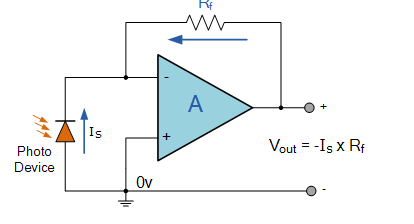Something that makes me confused while reading a tutorial on the Transresistance amplifier circuit.
Here is the picture of the circuit. It basically measures the current across the photo device and produces Vout accordingly.
My question is that: if the virtual ground rule applies, that is the voltage on the negative termianal is 0V (or very close to 0V) then there is no voltage difference across the photo device. If there is no voltage difference, how come the current flows across the photo device to be measured first place??

